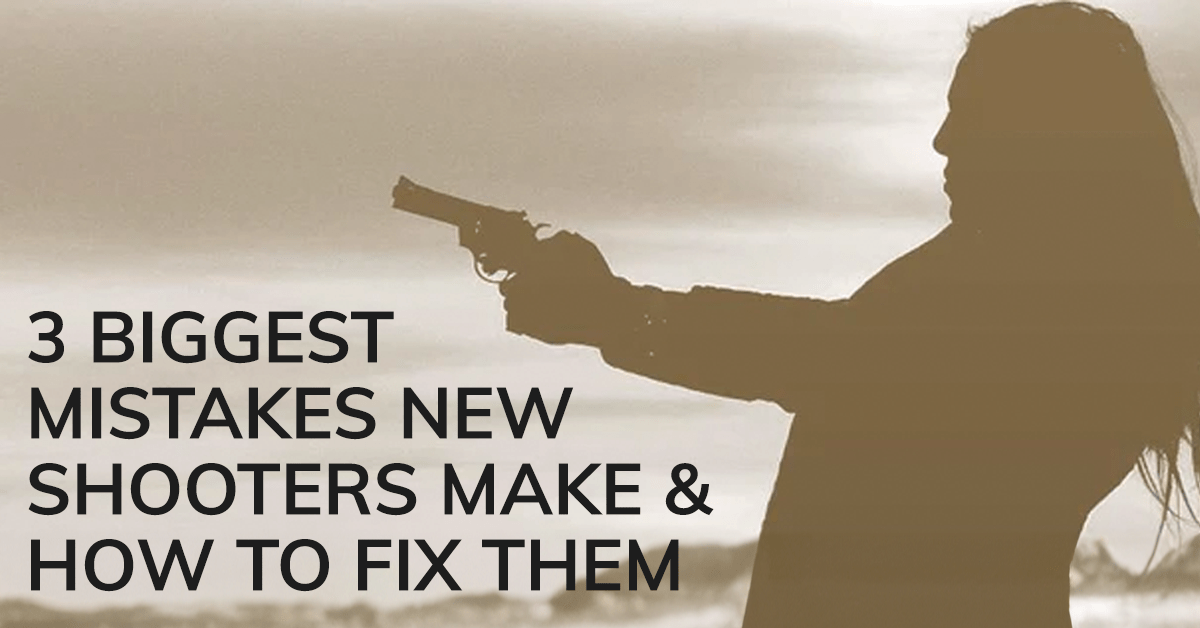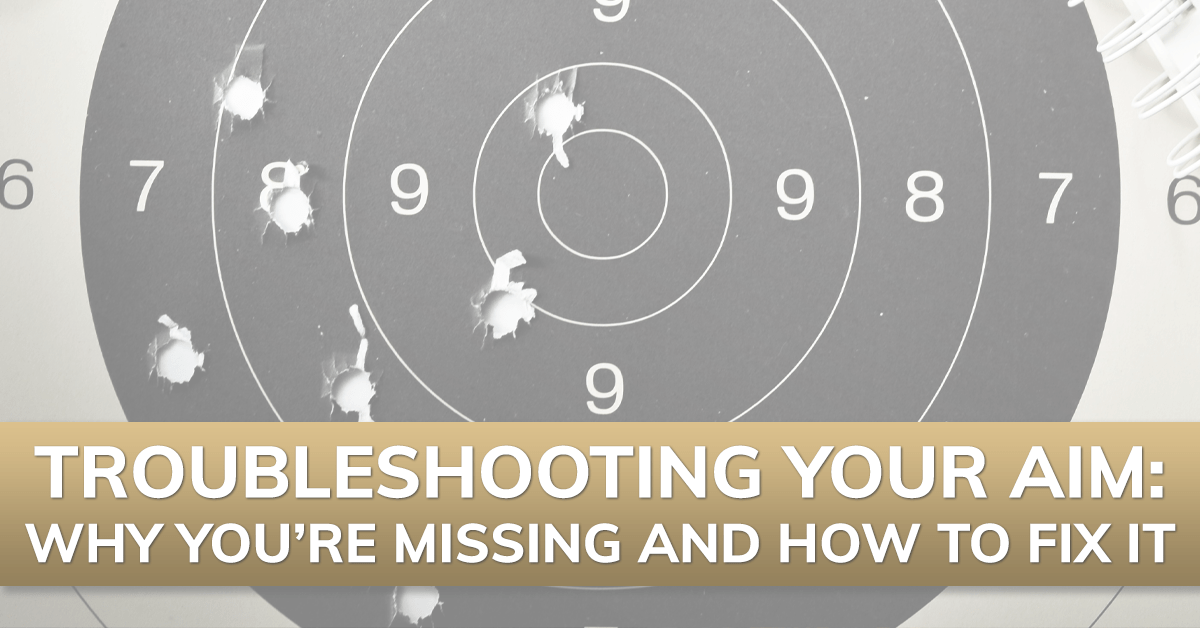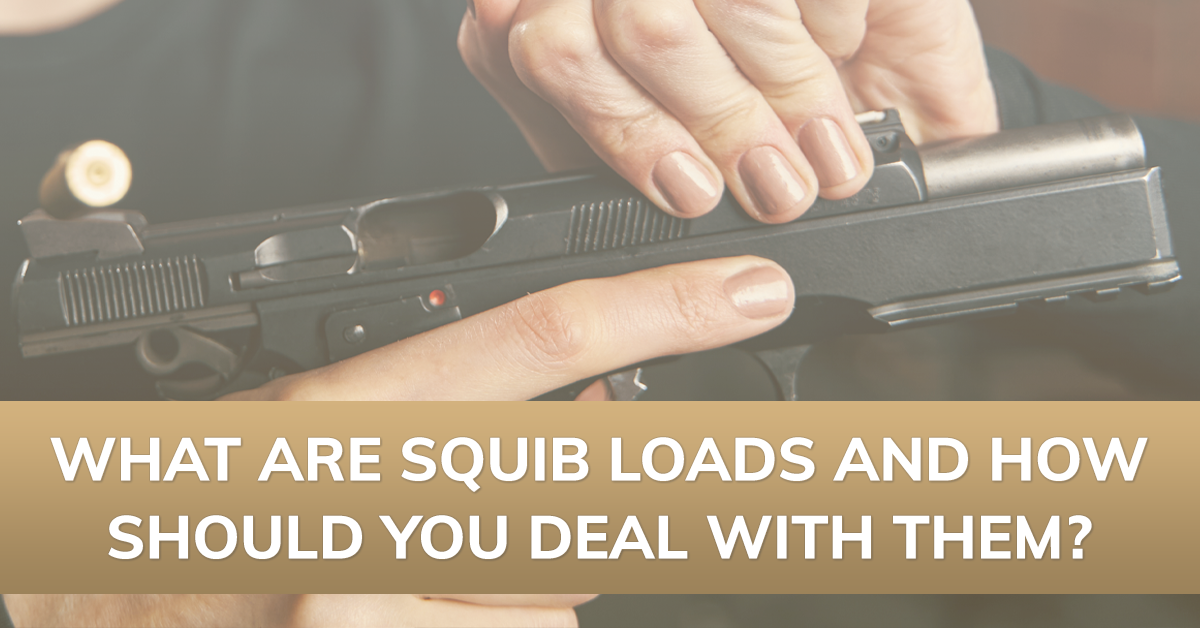Orders Over $100 Ship FREE (USA)!
Orders Over $100 Ship FREE (USA)!
CONCEALED CARRY
(Apparel with holster pockets or concealed-carry features)
PARTS & GEAR
RANGE STYLE
Gift shopping & not sure about size or style? Give a gift card instead!
GIFT IDEAS
EXPLORE
BFCM Sale 20% Off every item! EXTENDED
Black Friday & Cyber Monday EXTENDED: Indulge in Luxury, Pay Less.
Practical Solutions to The Most Common Pistol Malfunctions
4 min read
No matter how well-maintained (or expensive) your pistol may be, you're going to have to deal with handgun malfunctions sooner or later.
The key to not letting handgun issues ruin your range day is knowledge. It's incredibly important to understand what's happening when your gun isn't working like it's supposed to, and know ahead of time how to work past the problem.
And if you carry concealed, it's even more important to understand common handgun malfunctions - your life may depend on knowing how to clear a problem in a split second.
Let's take a look at four of the most common types of pistol malfunctions, along with practical solutions to fix them.
Failure to Feed (FTF)
A failure to feed happens when a round fails to properly enter the chamber of the pistol. This type of malfunction can happen for several reasons, like an improperly seated magazine, a damaged or worn-out magazine or mag spring, or a dirty chamber.
To troubleshoot a failure to feed:
- Check your magazine for any signs of damage or worn-out springs. Weak or worn-out magazine springs can result in unreliable feeding. If necessary, replace the magazine or springs.
- Make sure your magazine is fully inserted and properly seated in the pistol. Remove the magazine, inspect it for any debris, and reinsert it.
- Check your chamber by looking for any debris or obstructions. A dirty chamber can impede the smooth entry of a round. If you're at the range, take a clean rag or towel and wipe down your chamber, then give it a light oiling.
Your choice of ammunition can also affect feeding reliability. Cheap or low-quality ammunition may have inconsistent dimensions, leading to failures to feed. Use only high-quality ammunition from reputable manufacturers to minimize this issue. If you're using reloads, check to see if you have any case bulges or areas where the bullet isn't seated properly.
Failure to Eject (FTE)
A failure to eject happens when a spent case doesn't properly eject from the pistol after firing. This malfunction is often caused by a weak or damaged extractor, a dirty chamber, or an improper grip on the pistol.
Here's what you can do to address a failure to eject:
- Check your extractor for any signs of damage or wear. The extractor is responsible for gripping and pulling the spent case out of the chamber. If you find damage, replace the extractor.
- Clean the chamber and make sure there are no obstructions or debris present. Similar to failure to feed malfunctions, a dirty chamber can impede the smooth ejection of spent cases. Regularly clean the your gun to prevent buildup and ensure reliable ejection.
- Maintain a firm grip. Weak or limp-wristed grips can hinder the slide's cycling motion, leading to failures to eject. Practice a proper shooting grip and wrist position to minimize this issue. If you're experiencing consistent failures to eject, consider seeking guidance from a qualified firearms instructor to correct any grip or technique issues.
Double Feeds
A double feed happens when two rounds are attempting to enter the chamber at the same time, which causes a jam. This type of malfunction is likely a combination of mechanical issues, magazine problems, or user error.
To resolve a double feed:
- Lock the slide to the rear and visually inspect the chamber. Clearing the chamber of any obstructions or additional rounds is the first step when dealing with a double feed.
- Remove the magazine and check for bent or damaged feed lips, followers, or springs that may be causing the problem.
- Reload the magazine, insert it firmly, and release the slide to chamber a fresh round.
Stovepipes
Stovepipes happen when a spent case gets stuck in an upright position instead of fully ejecting, making the spent case perpendicularly stick out of the chamber (it looks like a little stovepipe sticking out of the chamber).
Stovepipes can happen for a few reasons. One common cause is a malfunctioning or defective extractor or ejector. These components are responsible for gripping and ejecting spent cases. If there's an issue with one or the other, the result could be a stovepipe.
Another culprit can be what's known as "limp wristing." This is when you're not gripping your gun tight enough. When the pistol recoils, it needs a solid grip to cycle the slide properly. If your grip is weak or loose, it can lead to stovepipes.
Using reloads that are not powerful enough can also cause stovepipes. If your ammunition doesn't generate sufficient force to cycle the action fully, you may experience this type of issue.
To troubleshoot stovepipes:
- Check the extractor and ejector for any dirt, debris, or damage. Clean them thoroughly and ensure they're functioning properly. If you find damage, replace the part.
- Pay attention to your grip and stance when shooting. Make sure you're holding the firearm firmly and maintaining a solid wrist position to allow the action to cycle properly.
- If you're using reloads, double-check that they're loaded with enough power to reliably cycle the action. Using factory-made ammunition from reputable manufacturers can also help minimize this issue.
If you've tried all of the above, but still have problems, it's time to seek professional assistance from a qualified gunsmith. They'll be able to diagnose any underlying mechanical issues that may be contributing to the problem and make the proper repairs or adjustments.
Also in Skill Building: Troubleshooting

3 Biggest Mistakes New Shooters Make & How To Fix Them
4 min read
Here are a few of the biggest mistakes new shooters make, along with some friendly advice on how to correct the issues.

Troubleshooting Your Aim: Why You’re Missing Your Target and How to Fix It
3 min read

What Are Squib Loads and How Should You Deal with Them?
3 min read

